■Simple Property Activates the Performance of the Stage
The properties of Chinese opera have characteristics other than those of other drama. For they have various patterns, paintings, and embroidery, that audience may see clearly from all the properties. What is “Qie-Mo” That is the small and big properties on the Chinese opera stage.
The Qie-Mo is not exactly real tools in daily life, but stage properties that are exaggerated and beautified, such as wagon flag representing wagon, whip representing horse, a package with a red flag representing luggage. In fact, there are plenty kinds of Qie-Mo, including daily usage tools (such as chairs and table, writing stationary, fan, lantern, candle stick application, and wine glass and so on), weapon (such as knife, sword, spear, staff, and so on), transportation tools (such as wagon flag, boat quant, horse whip and so on), representing properties of certain circumstances (such as cloth city, gate flag, wind flag, fire flag, clouds cloth, and so on), and other appliances added along the needs of the plot during performance.
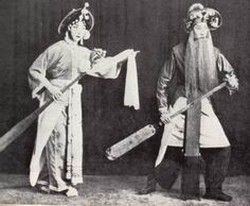
boat quant
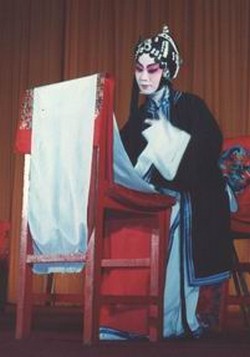
weaving machine
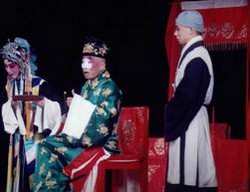
Buddhist Room
■Functions of table and chair on stage
On the stage of Chinese opera, usually several wooden chairs with red paints on it.There are embroidered table cloth and chair cloth on them. The purpose is to make differentiation between it and the rest of living tools. It may be more or less of the table and chair; they can be also separate or together. All depends on the needs of the performance. By the difference of the layout of the chair and table, it may indicate different location and environment. The usage is vast, all depends on the plot. It not only can help actor to accomplish the performance, but with various layout of the chair and table and the various colors and patterns of the table and chair cloth and combined with other properties, it will show certain representation of hint to the relationship of location and characters.
For example, a table may represent table, bed, funeral room, or hill and others. A chair may be ware door, well, stony stool, and so on. Combination of one table and one chair can be living room, office, study, and so on. Besides, there are combination types of one table and two chairs, two tables and two chairs, two tables and four chairs, three tables and five chairs and so on. It changes with variety that is astonishing. In addition, there is a big property that is easy to be ignored, that is “Shou-Jiu”. It is also called “Tang-Mu” or “Tai-Man”, which is the base curtain used as background on the stage. It can be used to show the actors, to beautify the stage, or normally used as the boundary between front stage and back stage.
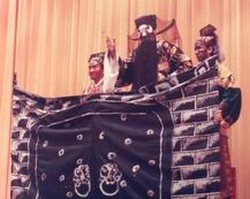
two chairs laid up behind the cloth city representing the city wall
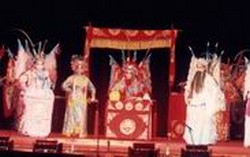
bedroom
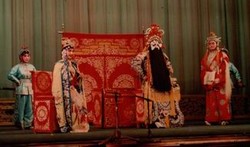
military camp
Reference:
Ding-Din Wang, Editor-in-Chief, Getting Acquaintances to Chinese Opera, National Taiwan Arts Education Center, 1992. / sorted by research team
Source of Photos:
Guoguang Opera Company http://www.kk.gov.tw/
Teaching website of JingJuLong http://www.jingjulong.cn/intro_to_beijing_opera.htm
